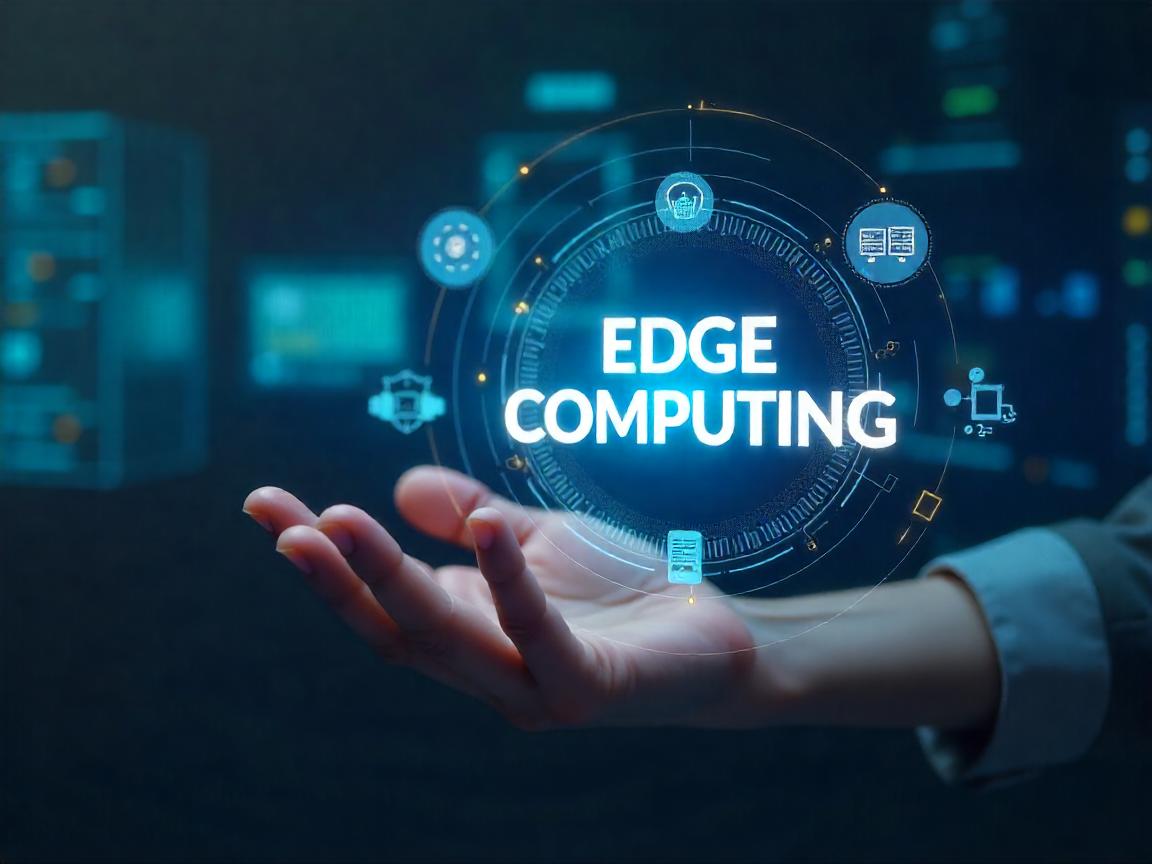As the world continues its shift toward digital transformation, edge computing is emerging as a driving force behind enhanced connectivity, low-latency data processing, and real-time decision-making. The rapid rise of the Internet of Things (IoT), 5G networks, and artificial intelligence (AI) is accelerating the demand for edge computing solutions across industries. Edge computing brings data storage and processing closer to the source of data generation, minimizing latency and bandwidth issues while optimizing operational efficiency.
This blog explores the future of edge computing, its transformative potential, and its ability to unlock next-generation technological advancements in various sectors.
The Evolution of Edge Computing
Edge computing began as a solution to the limitations of traditional cloud computing. While the cloud provides centralized data storage and computing power, it often struggles with latency when large amounts of data must be transferred between devices and data centers. As IoT devices proliferated and industries sought more immediate data-driven insights, the need for real-time processing became critical. Edge computing emerged as a solution, placing computational resources closer to the devices generating data.
In its early stages, edge computing was primarily used for simple tasks like reducing the load on cloud infrastructure. However, as technologies like AI, machine learning (ML), and autonomous systems advanced, the capabilities of edge computing grew. Today, it’s a key enabler for real-time applications across industries such as healthcare, manufacturing, and transportation.
Key Benefits of Edge Computing
- Reduced Latency:
Edge computing reduces latency by processing data closer to its source. This is especially important for applications that require real-time decision-making, such as autonomous vehicles, smart cities, and industrial automation. The ability to process data locally rather than sending it to a distant cloud server ensures faster response times. - Improved Data Security and Privacy:
With edge computing, sensitive data can be processed and stored locally, reducing the need to send it to centralized cloud servers. This not only improves data privacy but also enhances security by minimizing the exposure of sensitive information to potential breaches during data transmission. - Scalability and Flexibility:
As businesses increasingly rely on IoT devices and sensors, edge computing allows them to scale their operations efficiently. Edge devices can be deployed across various locations, processing data independently while remaining interconnected. This flexible architecture makes it easier to adapt to evolving technological demands. - Bandwidth Optimization:
Edge computing reduces the strain on network bandwidth by processing and filtering data locally before sending it to the cloud. Only essential data is transmitted, significantly reducing the volume of data traveling across the network and optimizing overall performance.
The Role of Edge Computing in AI and Machine Learning
The convergence of edge computing with AI and machine learning is transforming how businesses operate and interact with data. AI applications require vast amounts of data to be processed in real-time to enable intelligent decision-making. Traditional cloud-based models may struggle to meet the speed and low-latency demands of AI-driven solutions. Edge computing provides a solution by enabling AI models to be deployed and executed at the edge.
For example, autonomous vehicles rely heavily on real-time data from sensors and cameras to make split-second decisions. By processing this data at the edge, the vehicle can react to its environment more quickly and efficiently, enhancing safety and performance. Similarly, AI-powered industrial robots can use edge computing to optimize manufacturing processes by making immediate adjustments based on real-time data inputs.
Edge computing’s ability to bring AI and ML closer to the data source will play a crucial role in advancing industries that require automation, precision, and responsiveness.
Edge Computing and IoT: A Symbiotic Relationship
The Internet of Things (IoT) has created a massive influx of data as billions of connected devices generate real-time information from various sources. From smart home devices to industrial sensors, the need to process this data efficiently is paramount. Edge computing provides the necessary infrastructure to manage IoT data, ensuring that critical information is processed at the edge, while non-essential data is sent to the cloud.
In industries like agriculture, IoT sensors monitor soil moisture, temperature, and crop health. Edge computing allows farmers to analyze this data instantly, making informed decisions about irrigation, fertilization, and pest control. In smart cities, edge computing supports traffic management systems by analyzing data from traffic cameras and sensors to optimize traffic flow and reduce congestion in real time.
By pairing IoT with edge computing, industries can unlock new levels of efficiency and productivity, allowing them to derive actionable insights from massive amounts of data with minimal latency.
Edge Computing’s Role in 5G Connectivity
The rollout of 5G networks is accelerating the adoption of edge computing by providing faster data transfer speeds and lower latency. 5G’s ability to support high-density IoT deployments and real-time applications creates a perfect synergy with edge computing, enabling industries to leverage the full potential of this next-gen technology.
Telecom companies are already exploring edge computing’s role in enhancing 5G services. By deploying edge servers at cell towers and base stations, telecom providers can reduce latency and deliver high-quality services such as virtual reality (VR), augmented reality (AR), and online gaming. Additionally, industries like healthcare can benefit from edge computing by enabling real-time telemedicine consultations, remote surgeries, and diagnostics, all supported by 5G connectivity.
As 5G networks become more widespread, edge computing will play an integral role in driving innovations in connectivity, allowing businesses to deliver faster and more responsive digital experiences.
Real-World Applications of Edge Computing
- Healthcare:
Edge computing is transforming healthcare by enabling real-time patient monitoring and remote diagnostics. Medical devices equipped with edge technology can process patient data locally and provide immediate insights to healthcare professionals, improving patient care and outcomes.
- Manufacturing:
In smart factories, edge computing allows manufacturers to optimize production lines, monitor equipment performance, and predict maintenance needs in real time. By processing sensor data at the edge, manufacturers can improve efficiency, reduce downtime, and enhance overall productivity. - Retail:
Edge computing is helping retailers personalize the shopping experience by processing customer data at the edge to deliver tailored recommendations and promotions. In-store edge devices can also monitor inventory levels and optimize supply chain management in real time. - Autonomous Vehicles:
Autonomous vehicles rely on edge computing to process sensor data, make real-time decisions, and navigate complex environments safely. The ability to process data at the edge allows autonomous vehicles to react quickly to road conditions and avoid potential hazards.
- Energy:
Edge computing is playing a crucial role in the energy sector by enabling real-time monitoring of power grids, optimizing energy consumption, and improving the efficiency of renewable energy sources like wind and solar power.
The Future of Edge Computing: What Lies Ahead?
The future of edge computing is bright, with its potential set to expand further as industries embrace emerging technologies like AI, machine learning, 5G, and IoT. We can expect to see edge computing enable more advanced use cases, from smart cities powered by real-time data to fully autonomous industrial processes.
Here are a few trends shaping the future of edge computing:
- Edge AI:
AI models deployed at the edge will enable faster decision-making and automation in industries like healthcare, retail, and manufacturing. Edge AI will be crucial in advancing autonomous systems and improving operational efficiency. - Decentralized Edge Networks:
As more edge devices are deployed, decentralized edge networks will emerge, allowing businesses to create localized ecosystems of connected devices that can process and share data independently. - Enhanced Data Security:
With the rise of edge computing, new security protocols and frameworks will be developed to protect data at the edge, ensuring that sensitive information remains secure during processing and transmission. - Edge-to-Cloud Integration:
The integration of edge and cloud computing will become more seamless, allowing businesses to strike a balance between local processing and centralized data storage. This hybrid model will enable greater flexibility and scalability.
Conclusion
Edge computing is set to revolutionize the future of technology by bringing data processing closer to the source, enabling faster, more efficient, and more secure operations. As industries increasingly rely on real-time insights, AI-driven automation, and 5G connectivity, edge computing will be at the forefront of this transformation. From healthcare to manufacturing, retail to energy, the future of edge computing promises to unlock new levels of innovation, productivity, and connectivity across the globe.
The time to invest in edge computing is now, as businesses prepare to harness its full potential in the years to come.












